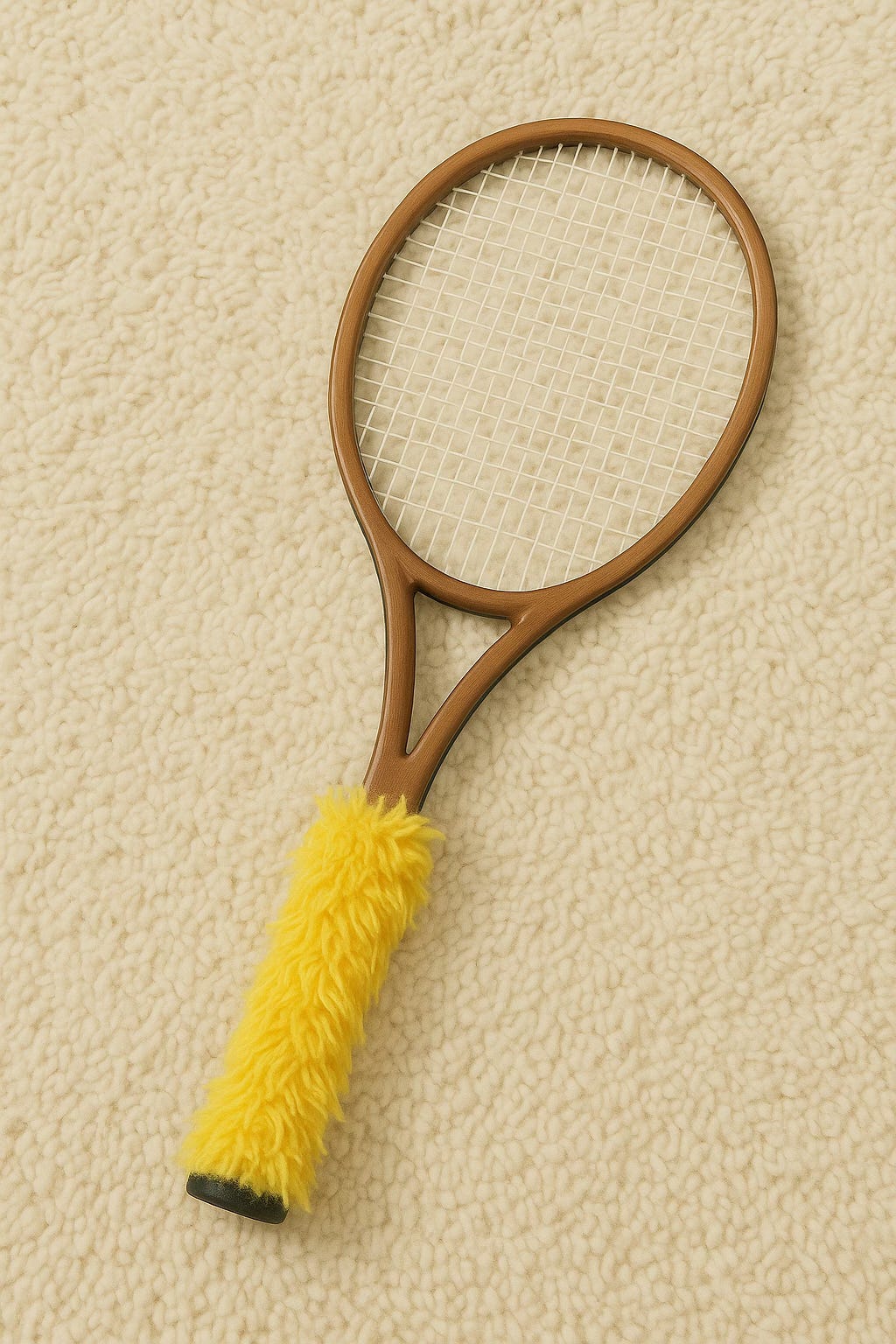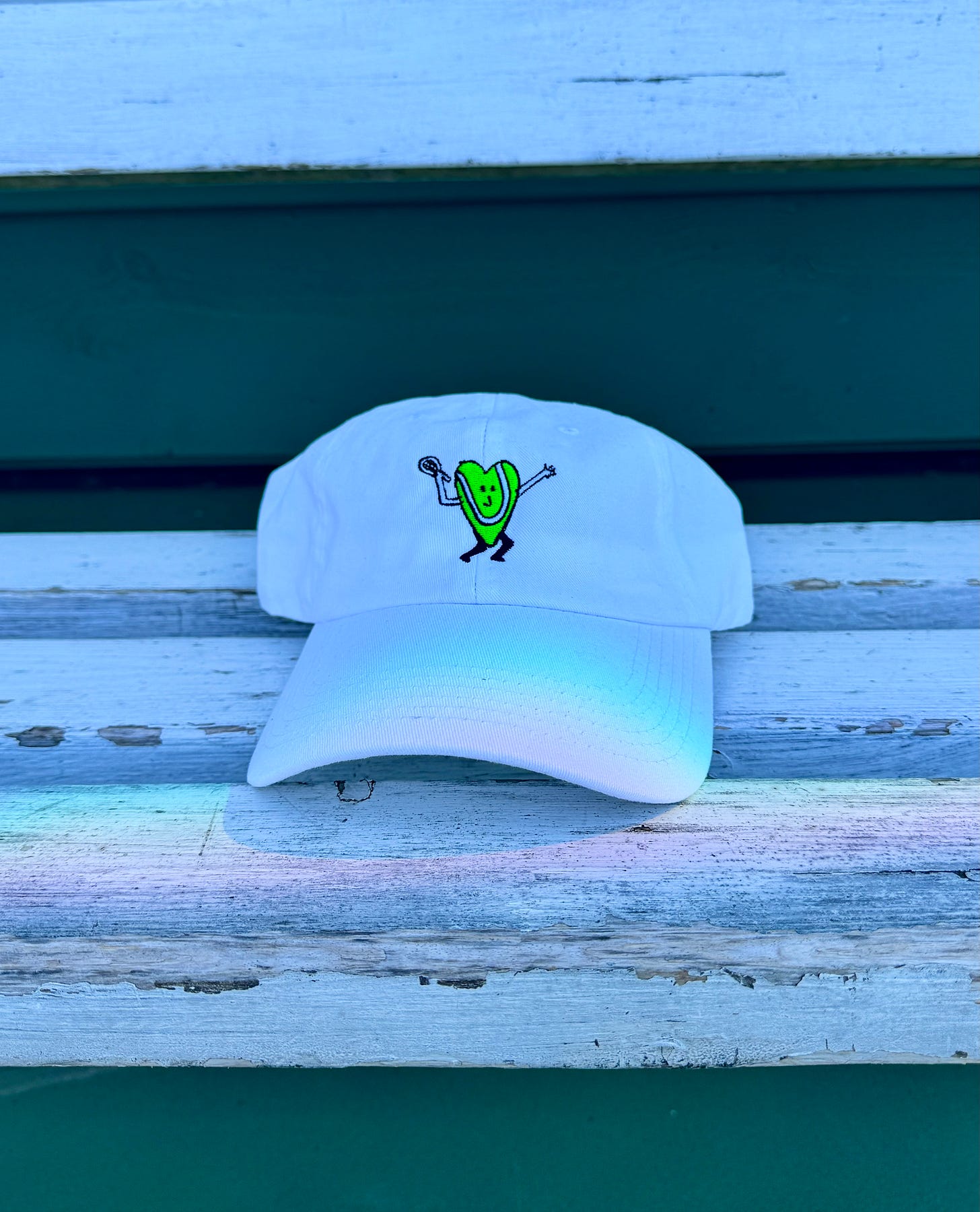Tennis Questions Answered: A Grip Guide
How to choose the right grip size, why your grip should be white, and other grip tips.
Your grip is the handshake between you and your racquet.
It affects how you swing, how you move, how you feel — literally.
Some players prefer bigger grips, others like them smaller. The right size isn’t just about comfort—it’s about feel, control, and identity. A 4 1/2 grip might feel like a baseball bat to one player and a toothpick to another.
How do I know if my grip is the right size?
This question is one of those questions that leads to other questions.
In short, your racquet’s grip is big if your fingers barely meet or don’t touch at all. It’s small if your fingers wrap all the way around and start overlapping. To decide if it’s too big or too small, use the following guidelines.
First understand what grip size says about your tennis game.
If you like using a bigger grip:
A bigger grip means you’re probably channeling some classic old school tennis energy. Smooth strokes, slices that stay low, and clean, biting, volleys.
Back in the day, bigger grips were all the rage: Grab a racquet with a big grip, use the continental grip on everything, and get to the net to volley. It was generally believed that you wanted to find the biggest grip you could control.
Big grips give you stability, quiet your wrist, can help with touch, and feel solid in your hand—like a handshake from someone who’s not trying to prove anything.
A bigger grip doesn’t allow you to squeeze - you can’t, it’s too big — so you often increase touch and feel (the secret to touch/feel is a relaxed grip) and you avoid wrist and elbow pain associated with a tight death grip.
A big grip is often harder to generate racquet head speed with, so it doesn’t help with topspin. Not being able to squeeze can create the illusion that the racquet is heavier, which will exhaust your shoulder.
If you like using a small grip:
You’re playing the modern game in whip city! With a smaller grip you can snap through the ball and generate more racquet head speed which can lead to more topspin. That’s why guys like Nadal (Topspin king) go for the smaller grip—it lets them feel the whip.
If your technique isn’t there, the extra whip will cause a loss of control. You’ll feel the lack of control especially on shots that require the continental grip and wrist stability (volleys and slice.) The loss of control leads you to squeeze the grip to create (the illusion of) control, and that squeeze can lead to arm pain.
Try a bigger grip if:
Your racquet feels like it’s wobbling during contact.
You’re using the continental grip on everything: slicing, serving, volleying, etc…
Your wrist and elbow are hurting.
Try a smaller grip if:
You need more racquet head speed.
You want more topspin.
You feel like you’re muscling the ball instead of whipping. Your shoulder gets exhausted and your arm feels heavy.
PRO GRIP TIPS
What are the best grips to buy?
There are two different types of grips: base/replacement grips and over-grips.
The base grip or replacement grip is the that comes with the racquet. It’s been machine-wrapped with perfect tension, designed to sit flush against the handle. Don’t mess with it. Just throw an over-grip on top and you’re good. There is one exception to this rule. It’s listed in my VIP Pro Tip at the bottom of this article.
If you have used your base grip and it’s worn down, old, or crusty (you know it’s old when it’s slippery, sheds grip particles and can even turn your hand black.) you have no choice but to get a new one. I recommend going with one from the same brand as your racquet: if you have a Head racquet use a Head replacement grip.
Don’t attempt putting on a replacement grip yourself, unless you’re a pro— even then it’s hard. Always get the pro shop or a tennis pro to put on your base grip.
What is the best over-grip?
Over-grips are the grips you put over the base grip. They’re thinner and usually come in packs of three or more. You usually want some tack and stickiness to this grip. More stickiness allows you to squeeze less.
While there are a ton of over-grips out there, and a lot of gimmicks - shag carpet grips, pull over grips that look like a condom for your racquet - I find there are only two over-grips sitting at the big table:
Tourna Grip is a classic. That iconic light blue grip with the red finishing tape. Pure 90s and early 2000s energy. Every pro used it. It’s dry, tacky, sweat-absorbing, and you can even flip it around and use the other side. It used to be the secret handshake of the tennis underground: if you knew, you knew.
The other one, the best in the game right now, is the white comfort over-grip. Specifically, Wilson’s Pro comfort grip. It has a super tacky, clean feel. Personally, I’m all-in on Head’s Xtreme Soft Over-grip. It’s their version of of the Wilson comfort grip. Call it OCD, but since I use a Head racquet I like to use a Head grip: there is something clean and magical about having all the same brand grip, string, and racquet.
Why your over-grip should be white.
White grips are the play. Or at least, a grip that shows the dirt as it ages. Not because it’s cool and rugged to have a dirty grip - it’s definitely not - but as it gets dirty, it shames you into changing it. Good ol’ shame! Built-in accountability. Your grip gets gross, and you’re reminded: "Oh, right. Time to re-grip, or else Rosemary and the gang will judge me."
Pro Tip: Always Be Over-gripping (ABO)
Now that you’ve figured out if you want a smaller grip or a bigger grip, find a racquet where the base-grip feels a touch too small and add one over-grip. Boom. That’s your perfect sized grip.
You always want an over-grip on your racquet. Using the bare stock grip isn’t just a rookie giveaway—it wears down the handle, smooths out the edges, and messes with the feel. Technically, yes, you can replace the base grip... but it never feels quite the same. It will always feel a little off. A little too squishy or too slick.
You can throw on two over-grips, or even three, to make it a little bigger, but once you get past one over-grip, it starts to feel like you’re holding a couch cushion. You will lose stability because you can’t feel the edges of the stock grip.
One fresh over-grip over a base grip that is a tad too small = perfection.
VIP Pro TIP: The Ultimate Grip Hack
Here is the ultimate grip set up:
Keep reading with a 7-day free trial
Subscribe to coach conor casey to keep reading this post and get 7 days of free access to the full post archives.




